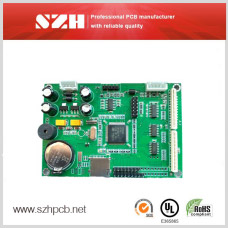Among PCB manufacturers, there is a common perception that AOI has not changed much since it was introduced decades ago. Over the last few years, however, new advanced technologies have made AOI solutions smarter, faster and much more accurate. AOI system data have even been integrated with newly developed automatic 3D shaping tools to enable restructuring of defects in PCB patterns that are detected by the AOI solution.

Many of these new AOI technologies offer benefits to a broad range of PCB manufacturers, from high-volume mass production shops to those focused on special market segments with unique materials and PCB structures or those who need high flexibility and quick turnaround operation.
While not all AOI solutions are alike, it can be assumed that all PCB manufacturers and designers share a concurrent core of production goals such as shortening overall inspection time, increasing real defect detection while reducing false positives, and reducing both setup time and cost per inspection. If some or all of these goals are on your to-do list, you will definitely be interested in some of the new innovations in AOI.
Much More Accurate Defect Detection
AOI accuracy has always been important. Today, as designs become more complex and expensive, production defects have a greater impact on profit. In designs for automotive, aerospace, military and medical devices, for example, where reliability and safety are critical, 100% detection accuracy is essential.
Numerous factors increase the complexity of PCB defect detection. They can include higherdensity designs with lines and spaces below 30 μm and a wide array of board types such as HDI, high layer count, flex and rigid-flex. In addition, there is a wide array of substrate materials including expensive high-frequency dielectric resins like Rogers and Teflon™. Not all AOI solutions can handle all of these factors.
Most AOI solutions are able to rapidly scan for errors using a single, monochromatic pattern image that is captured using a composited average illumination of the different materials and colors on the inspected panel. For low-cost products where, for example, scrap is a lower priority or where a higher defect count can be sustained, this method might suffice. However, when these factors are in play, multiple imaging technology can be of great value.